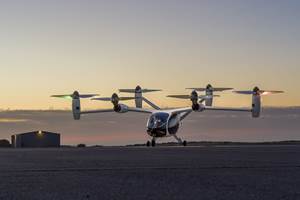I was a journalism major in college. I took classes on news reporting, news writing, feature writing, publication management, journalism ethics, magazine publishing, news editing and public relations. I learned how to ask questions, conduct interviews, take notes and write clearly and concisely. I learned about the journalism profession, in which there is a certain nobility attached to writing and publishing for an audience. I learned that journalism has, theoretically, a built-in objectivity that confers to it a much-coveted authority, reliability and trust that must be closely guarded and protected.
I also learned about the publishing business. I learned that a successful publication — newspaper or magazine — typically depends on advertiser support for its financial survival. I learned that advertisers seek potential customers, and that a good publication provides advertisers such customers by cultivating and serving a well-defined audience. In short, I learned that the journalism profession needs the publishing business, and the publishing business needs the journalism profession.
Despite this symbiotic relationship, I also was taught that an upstanding journalist should never be influenced — or even appear to be influenced — to write or not write, or publish or not publish, in the service of business or monetary interest. I was told that there is a high, wide, impenetrable wall separating journalistic pursuits from financial pursuits. Never the twain shall meet.
Then I graduated.
I chose to go into business-to-business trade publishing, which is more specialized and niche-oriented than business-to-consumer publishing. I discovered — to my horror, at first — that that high, wide wall separating journalistic pursuits from financial pursuits was more like a short, narrow, friendly hedgerow — a suggestion of a separation of interests, but not a real separation of interests.
So, there I was, 23 years old, fresh out of college, in a new job, working with new people, full of untainted journalistic aspirations. I was being asked by sales representatives much older and more experienced than myself to do them favors. To publish a new product for a customer, or prospective customer, or to place an ad on the same page as the company reference in a story. I did not learn how to handle such requests in college, but fortunately I had editors above me who could provide the guidance I needed.
The truth is that business-to-business publications, in particular, usually operate in industries too small and too relationship-focused to be neatly segregated the way the theoretical college version of journalism demands. I discovered that I could not and cannot, as an editor, simply ignore the interests of the advertisers who support us. Conversely, I could not and cannot turn editorial content into a marketing vehicle for advertisers. What to do?
Eventually, I developed my own philosophy, and it came down to this: We serve our advertisers best when we serve our readers first. That is, our primary job as editors here at CW is to serve the needs of our audience, and we do that by exploring the tools, materials and processes they use to do their jobs as they fabricate composite parts and structures. If we do that well, which I think we do, we create an editorial environment that is trusted, respected and useful — an environment that advertisers want to be a part of, because you, our readers, want to be a part of it.
This is not a trivial or idealistic notion, because CW relies exclusively on advertiser support to serve its audience. We do not charge you a subscription or any other fee for the content we produce. If you, as a reader, are deemed “qualified” — that is, you are a designer, engineer, manager or OEM involved in composites manufacturing — then you can receive CW for free. In turn, our advertisers get access to you, a prospective customer, who works in the industry our advertisers serve.
So, maybe that hedgerow is not so easy to breach. Maybe it’s a little taller and a little thornier, and we have to be careful and thoughtful reaching over it. In the meantime, we will continue here at CW serving your needs first, and hope to do so for many more years to come.
Related Content
Remembering Don Adams
When one thinks of composites test methods, one thinks of Don Adams. Don passed away at the end of 2022. We remember him here.
Read MoreHow composites have become a necessity
Composites used to be one of many material options across industries and applications, but that's not the case anymore.
Read MoreAchieving composites innovation through collaboration
Stephen Heinz, vice president of R&I for Syensqo delivered an inspirational keynote at SAMPE 2024, highlighting the significant role of composite materials in emerging technologies and encouraging broader collaboration within the manufacturing community.
Read MoreRevisiting the OceanGate Titan disaster
A year has passed since the tragic loss of the Titan submersible that claimed the lives of five people. What lessons have been learned from the disaster?
Read MoreRead Next
Developing bonded composite repair for ships, offshore units
Bureau Veritas and industry partners issue guidelines and pave the way for certification via StrengthBond Offshore project.
Read MoreVIDEO: High-volume processing for fiberglass components
Cannon Ergos, a company specializing in high-ton presses and equipment for composites fabrication and plastics processing, displayed automotive and industrial components at CAMX 2024.
Read More“Structured air” TPS safeguards composite structures
Powered by an 85% air/15% pure polyimide aerogel, Blueshift’s novel material system protects structures during transient thermal events from -200°C to beyond 2400°C for rockets, battery boxes and more.
Read More












.jpg;maxWidth=300;quality=90)









